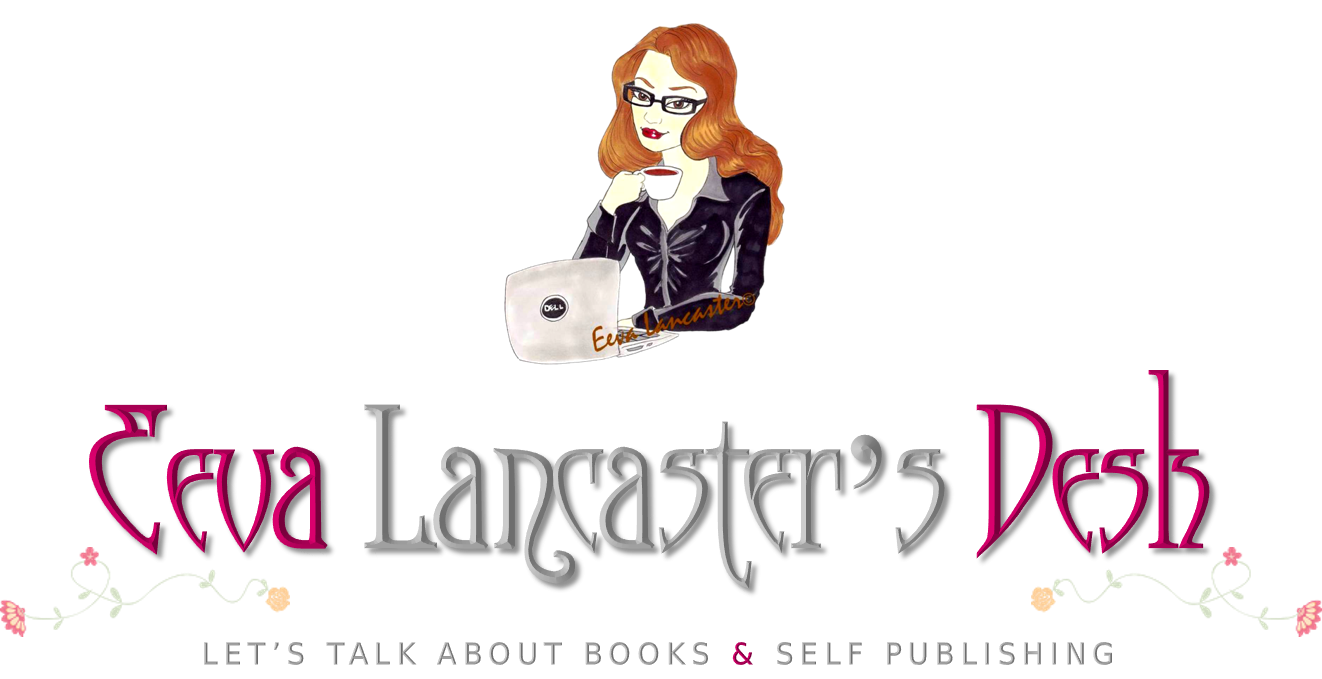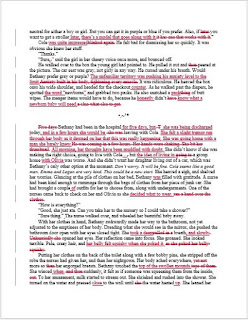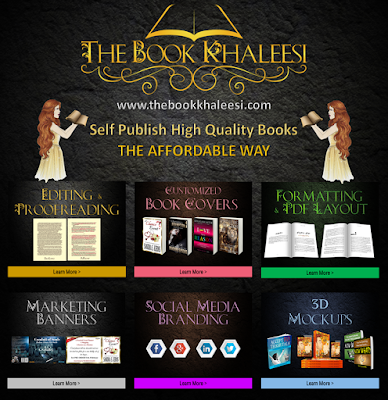If you knew exactly what to do, instead of groping around in the dark, reading all kinds of articles that tell you what you should be doing?
Just because we're self published authors doesn't mean that we can bypass the necessary steps when creating and publishing a book. We are accountable forever for the things that we create.
‘His expectations for his first book had been both cautious and modest, and they had been appropriate; one reviewer had called it “pedestrian” and another had called it “a competent survey.” … After a while he tired of seeing it; but he never thought of it, and his authorship, without a sense of wonder and disbelief at his own temerity and at the responsibility he had assumed.’
(From the novel, Stoner (1965), by John Williams, chapter 6)
Working in the corporate world has taught me that processes have a purpose. Not only does it simplify things, it gives you more clarity and allows you to plan your next move. It certainly beats doing things haphazardly, wasting your time on things that are not important at the moment.
Many of my clients have read numerous articles on how to self-publish. The differing opinions just ends up confusing them more. While it is good to look at all the ways you can publish and promote your book eventually, it is helpful in the beginning to have a basic process.
What are the necessary, non-negotiable, can't skip steps?
Here's a short list that you can use as a guide when you decide to publish your book:
- After THE END - COMPLETING the FIRST DRAFT
When you're done with the first draft, step back from the manuscript and take a few days off, or however long it takes. Get the book out of your system so you can go back to it with a clearer head. Then, sit down and read through it again. Improve on it. - After The First Draft - THE BETA READERS
Once you're satisfied that you've given the manuscript your best, send the first draft off to Beta Readers. They will be your first readers, and should be people whose opinion you trust. They will let you know what they think of the book. From their opinions, you can make the necessary changes to the manuscript... or not. Totally up to you. Beta readers should comment on the flow of the story, plot holes, the characters, dialogue, veracity of facts - not the typos and what-nots.
Authors, some of them in my opinion, are not reliable beta readers. They have a writer's eye, and will examine the manuscript from a writer's point of view. How would they have written it? It's hard to be objective. It's better to show the book to someone who loves to read, but doesn't write, if you want an honest opinion on THE STORY. If it's a non-fiction book, get a beta reader who knows something about the topic. Some writers do make great beta readers. And if you want feedback on the WRITING, then they're the best critiques. Just choose who you get feedback from.
Don't feel bad when you get negative feedback. It's just the first draft. Remember that to write is to be vulnerable. Have courage. It will not kill you, you'll see. And knowing the truth early, before you publish, will help you avoid a reader's negative review. Now that would hurt. :) - After The Beta Readers - THE EDITOR
This is the next most important step in an Indie Author's life. Finding a good Editor to work with. Many authors self-edit, and that's just too bad. Why? If you can identify what needs to be edited, you would've caught it on the second pass. Right? Why would you notice it on the third pass or the fourth or the fifth? Just like in real life, it's very difficult for us to see our own mistakes.
An Editor can look at the manuscript with an objective mind. You might think that you've written the next bestseller, and that everyone will be wowed when they read your book. That's the reason why you shouldn't be editing your own work. You're biased. Your editor won't have the same emotional ties to the book. They'll chop off what needs to removed without being all sentimental about it.
So, after you've completed your second draft, when you've made changes based on the feedback of your beta readers, send the manuscript to an Editor. You've done your best. Let them clean and polish the manuscript. Because editing takes up so much time, it's costly. The bulk of your publishing expense will go to your editor. Some authors think that Editors cost thousands of dollars. That is far from the truth. Many good freelance writers offer editing services at an affordable price, in response to the rising demand from Indie Authors. Find a good one. Someone with experience is preferable. Someone who will care about your success.
Authors can be an arrogant bunch with very short memories, not all, but a lot of us are - and I say that not with contempt, but with amusement - and from experience. After their manuscript has been polished by an editor, and as time goes by, they forget why their book turned out as awesome as it did. They start believing that they did it all by themselves. So, on their next book release, they forego the editor. Big mistake. It's like watching a funny horror story. I wish I could give examples... but never mind. You just have to take my word for it :
With perfect love and perfect trust, leave your manuscript with your Editor, and move on to the next step.
*** And if it doesn't kill you to do so, do give credit to your editor when you publish. It doesn't discredit you as a writer to admit that you have one. All notable writers have editors. In fact, it gives you more credibility since you're doing everything you need to do to publish a book worth reading. - During Editing - DESIGNING THE BOOK COVER
A professionally designed book cover makes all the difference. Though we want to think otherwise, a book is often judged by its cover. It's the first thing readers see when they're browsing for books to buy. If you have a book cover that catches the eye, that's an advantage. You may convince them to read your book blurb, which brings them one step closer to a purchase.
Authors think it's easy to design a cover, but it's not. A cover is an advertisement, and should be a visual representation of your story. And let's not get into fonts and color themes. That's for another article. All I'm saying is, the cover is important. It's up to you if you want to design it yourself. - During Cover Design - THE BOOK SYNOPSIS / BLURB
While the cover is being designed, you need to come up with your book's synopsis, in case you want a back cover designed for Createspace. You may choose a more formal synopsis for the back cover, more of a summary, but your online blurb should be written differently, with a more "selling" tone. - After The Editor - TURNING the MANUSCRIPT into a BOOK
A manuscript is just a bunch of words, it's not a book yet. Before you publish on Amazon, Smashwords, Kobo, B&N, Lulu, Createspace, etc., you need to have it formatted for their respective platforms. The layout and format of an eBook, is not the same as a Printed Book. The manuscript needs to be formatted to meet the requirements of the specific publishing platform. EPUB, MOBI, PDF, SMASHWORDS, PRINT - they're all different. There's no One-Format-Fits-All.
After the manuscript has been edited, and it has been proofread and polished to your satisfaction, send the manuscript to the Formatter. They will turn it into a book that will display nicely on eReaders and in print. Good formatting gives readers the illusion that they're reading a book. It enhances the reading experience.
You can also learn how to do this yourself. There are enough instructions on Google for someone with the patience, and an eye for good design.
Related Article: Formatting and Layout of Manuscripts - After the Formatter - PUBLISH your BOOK!
Finally, all the efforts and the hours you spent has brought you to this moment. Your book is ready to be shown to the world. You've given the book what it needs. That's all anyone can ask from a self-published author. Now decide if you want to publish globally or exclusively with Amazon.... and PUBLISH!
What a great feeling it is, to see your book up there. Along with Stephen King's and Jeffrey Archer's! No matter how many books you release, you get the same feeling of pride and elation.
Give yourself a pat on the back. Not everyone can write and publish a book worth reading. Whether it becomes a bestseller or not, you're a published author. That's quite an accomplishment, don't you think?
When you complete another manuscript, just follow the same steps above. Rinse and Repeat.
I believe that you need 3 things to make a dream come true:
A VISION
THE RIGHT EXECUTION
PERSISTENCE
What we discussed here is the execution part. If you don't know how to execute and implement your vision, well... it won't matter how persistent you are, if you're not doing it the right way.
If you found this article helpful, do SHARE IT. Sharing is Loving. And you do love me, right?
Well, I love you too.
Well, I love you too.
If you'd like to chat or give feedback, I welcome your comments.
For all your Self Publishing Needs, check out THE BOOK KHALEESI website.
For all your Self Publishing Needs, check out THE BOOK KHALEESI website.











No comments:
Post a Comment
I'd love to hear from you!